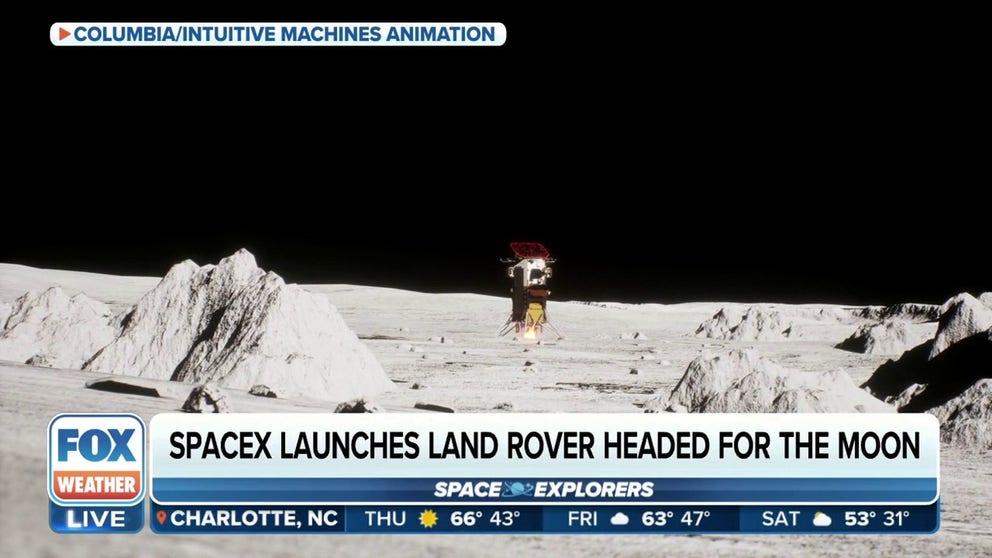SpaceX launches Intuitive Machines Moon lander beginning second attempt for private lunar landing this year
The Nova-C lander known as Odysseus could touch down on the Moon as soon as Feb. 22. If successful, Intuitive Machines will become the first private company to land on the Moon.
SpaceX launches rocket carrying Intuitive Machines' Moon lander
SpaceX launched the Intuitive Machines' Moon lander from Florida early Thursday morning that marks the beginning of the second attempt this year to land a private robotic mission on the Moon.
KENNEDY SPACE CENTER, Fla. – A SpaceX rocket roared to life early on Thursday, launching Intuitive Machines' Moon lander from Florida, beginning the second attempt this year to land a private robotic mission on the Moon.
The Houston-based company's attempt to land NASA science on the Moon is happening less than a month after another company failed to reach the lunar surface, also as part of NASA's Commercial Lunar Payload Services (CLPS) program.
Intuitive Machines Nova-C Moon lander named Odysseus, or "Odie," launched at 1:05 a.m. EST on a SpaceX Falcon 9 rocket from NASA's Kennedy Space Center launchpad 39A.
Hours after the overnight liftoff, NASA said the Nova-C lander "successfully powered on, made communications contact, and is now on its way to the Moon."
If the rest of the spaceflight goes well, the lander could touch down on the Moon as soon as Feb. 22. It's a short trip to the Moon because Intuitive Machines' spacecraft does not require a lot of time in Earth orbit prior to heading toward lunar orbit.
The mission known as IM-1 is set to deliver six NASA science payloads and commercial technologies to a region of the lunar south pole known as Malapert. It's also considered a potential landing site for NASA's Artemis III mission, the first astronaut mission to the Moon since 1972, slated for 2026. The hexagonal-shaped lander is about the size of the British phone box made famous as the time-traveling Tardis in the "Dr. Who" science-fiction series.
No private company has ever successfully landed on the Moon. An attempt by Astrobotic's Peregrine lander, also part of NASA's CLPS initiative, was foiled by mechanical issues in orbit after launching on the first Vulcan rocket flight with United Launch Alliance. Peregrine burned up in Earth's atmosphere in mid-January, ending the first American Moon landing attempt.

Intuitive Machines Nova-C lander, also known as Odie, within the SpaceX Falcon 9 fairings. (Image: SpaceX)
After the first CLPS mission with Astrobotic failed to reach the Moon, Intuitive Machines aims to achieve the first private Moon landing.
"We are keenly aware of the immense challenges that lie ahead," Intuitive Machines CEO Steve Altemus said. "However, it is precisely in facing these challenges head-on that we recognize the magnitude of the opportunity before us: to softly return the United States to the surface of the Moon for the first time in 52 years."
Even government-managed mission success is not guaranteed. About half of all Moon landing attempts don't survive. In January, Japan became the fifth country to successfully land on the Moon.
Intuitive Machines plans to stream live video of the lunar landing when it happens.





